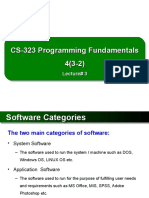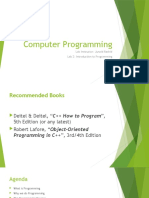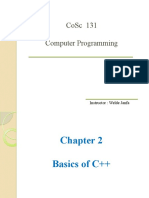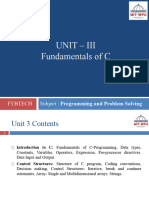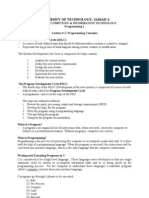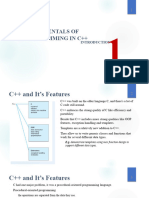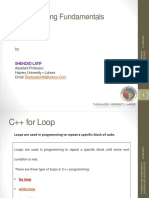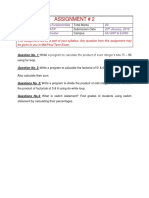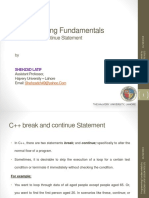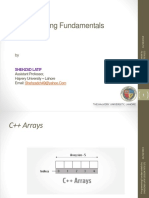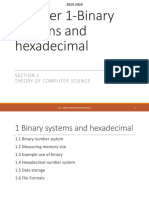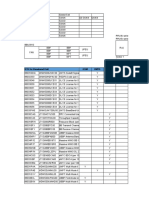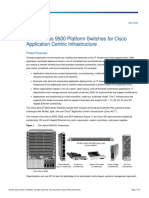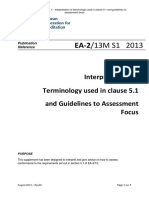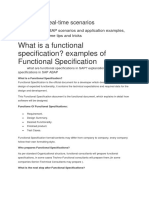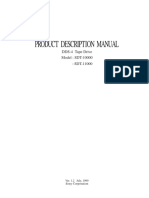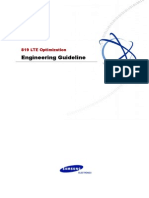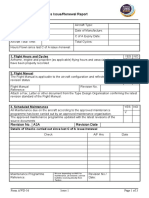0% found this document useful (0 votes)
47 views35 pagesProgramming Fundamentals: Program Structure
SHEHZAD LATIF (03134797617)
The document discusses the basic structure and phases of a C++ program. It begins with editing source code, then preprocessing, compiling, linking, loading, and finally executing the program. Preprocessor directives like #include tell the compiler to insert header files before compiling. The program statement instructs the computer, while preprocessor directives are for the compiler.
Uploaded by
Hash zeeCopyright
© © All Rights Reserved
We take content rights seriously. If you suspect this is your content, claim it here.
Available Formats
Download as PPTX, PDF, TXT or read online on Scribd
0% found this document useful (0 votes)
47 views35 pagesProgramming Fundamentals: Program Structure
SHEHZAD LATIF (03134797617)
The document discusses the basic structure and phases of a C++ program. It begins with editing source code, then preprocessing, compiling, linking, loading, and finally executing the program. Preprocessor directives like #include tell the compiler to insert header files before compiling. The program statement instructs the computer, while preprocessor directives are for the compiler.
Uploaded by
Hash zeeCopyright
© © All Rights Reserved
We take content rights seriously. If you suspect this is your content, claim it here.
Available Formats
Download as PPTX, PDF, TXT or read online on Scribd
/ 35

